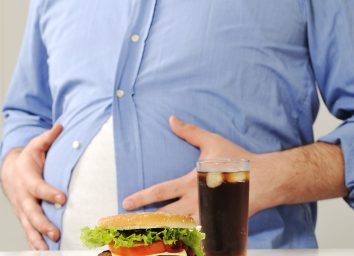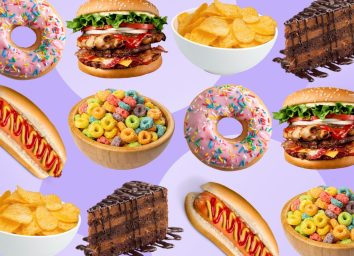The 2018 Fake Food Awards from Eat This, Not That!

You've heard at lot about "fake news" lately. But here at Eat This, Not That!, we also worry about another big(ly) problem in America: "fake foods!"
Those veggie chips? Not real vegetables. Guacamole? No avocados in sight. And that "maple" syrup you pour on your pancakes? Just high fructose corn syrup in disguise.
With so many fake foods masquerading as the real deal, we're shining a light on the biggest imposters on the market. These highly-anticipated 2018 Fake Food Award "winners" are actually the biggest losers; thanks to the combination of exploiting labeling technicalities and good ol' fashioned marketing, manufacturers are selling foods that are less trustworthy than gas station sushi (or your sketchy ex).
Find out if the processed foods you've been eating are really what you think they are, compliments of the researchers at Eat This, Not That!—and be sure to avoid the 50 Unhealthiest Foods On The Planet.
Truffle Oil

Did you really think those "truffle fries" served at your local diner are made from fungi harvested from pigs? Chances are, you're eating a chemical imitation. According to The New York Times, that "flavor" or "essence" you're eating is really the chemical 2,4-dithiapentane, also known as bis (methylthio) methane.
Canned Pumpkin
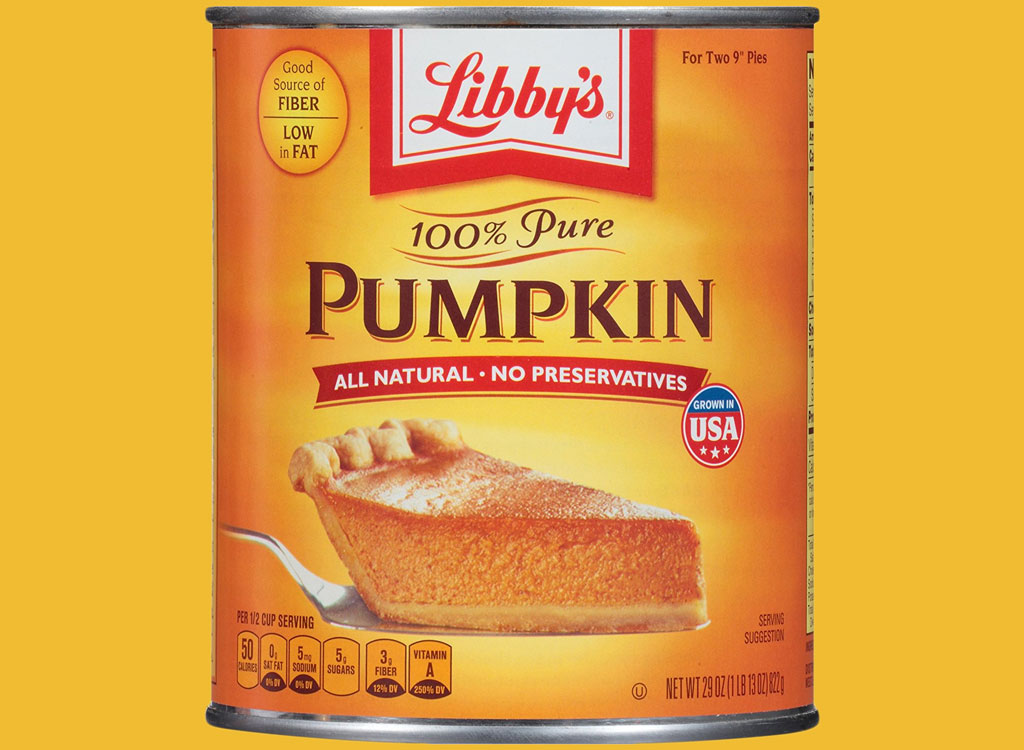
When fall hits, canned pumpkin finds its way into dozens of recipes, from pumpkin bread to pumpkin pie to pumpkin spiced lattes. But the canned pumpkin puree that's become synonymous with autumn isn't actually pumpkin at all. At least, not the orange pumpkins you're used to carving up at Halloween and decorating your mantelpiece with. Libby's Pure Pumpkin, the popular canned pumpkin puree brand, actually uses a type of squash called the Dickinson squash in its pumpkin puree. In fact, it's closer to a butternut squash than a pumpkin. Although it's legal for Libby's to brand its pumpkin puree as pumpkin since it's hard for the FDA to draw a line between pumpkins and winter squash, according to Epicurious, just know the same pumpkin you're used to picking off the vine isn't the same one in your homemade pie.
Odwalla Original Superfood Smoothie
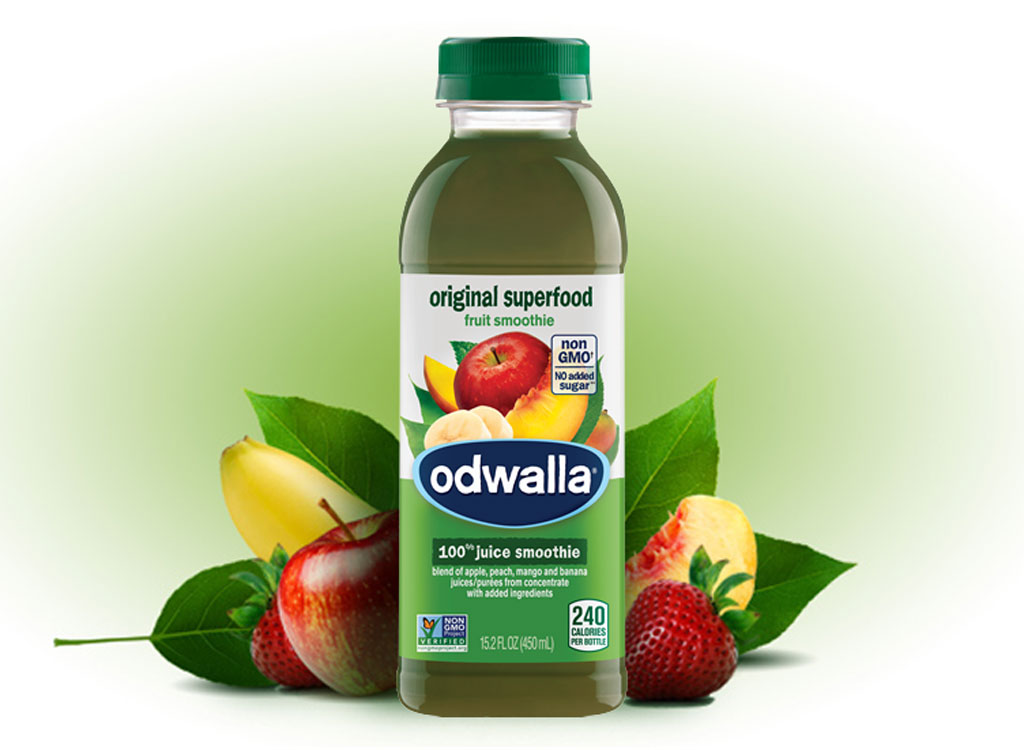
Bottled supermarket smoothies are already pretty bad for weight loss, especially with the shocking amounts of sugar in each one. Odwalla's Original Superfood smoothie is no different; in fact, it boasts a whopping 240 calories and 51 grams of sugar in each bottle. Even though the juice is green in color, the "superfood" in question here is mostly just apple juice from concentrate. Other main ingredients include peach and mango purees from concentrate and banana puree. This smoothie actually has only 55 milligrams of kale, which amounts to 0.002 ounces. (For reference, 1 cup of chopped kale is about 2.3 ounces.) There's also less than 1 percent of other greens too, including spirulina (for color), wheat grass, barley grass, wheat sprouts, and jerusalem artichoke. Don't let the green color fool you; it's just fruit juice and fruit purees.
'Maple' Syrup
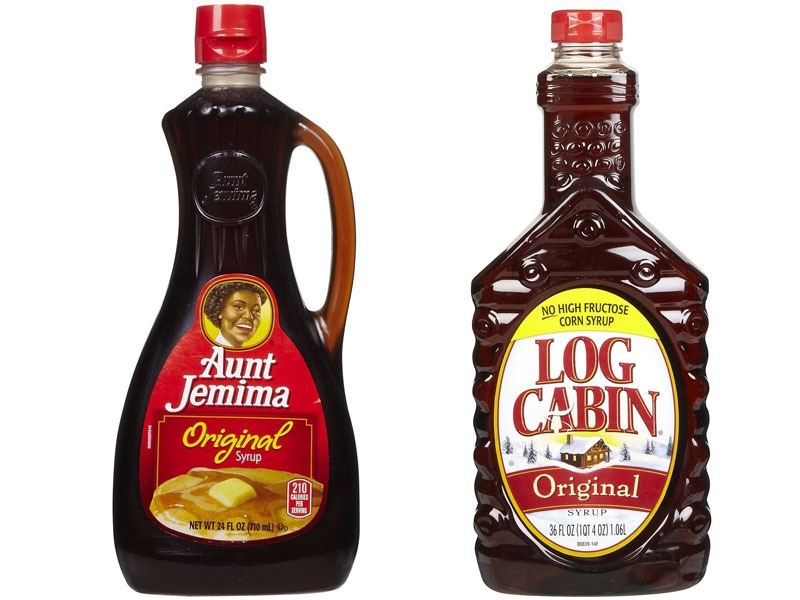
Yes, technically brands like Aunt Jemima, Mrs. Butterworth's, and, most deceptively, Log Cabin, only call their products "syrup," but their marketing sure says otherwise. Whether their dark amber color shines through clear plastic bottles or lies hidden within the same plastic jugs that have housed maple syrups for generations, there's no discrepancy that these companies want you to equate their product with the real stuff, Grade A maple syrup—you know, the sap that's tapped from maple trees and boiled into an antioxidant-rich sweetener? But unlike this functional sweetener, these syrups are primarily composed of high fructose corn syrup, artificial flavors, and caramel color—all ingredients that have been connected to a slew of health issues, from fatty liver disease to cancer.
White Chocolate
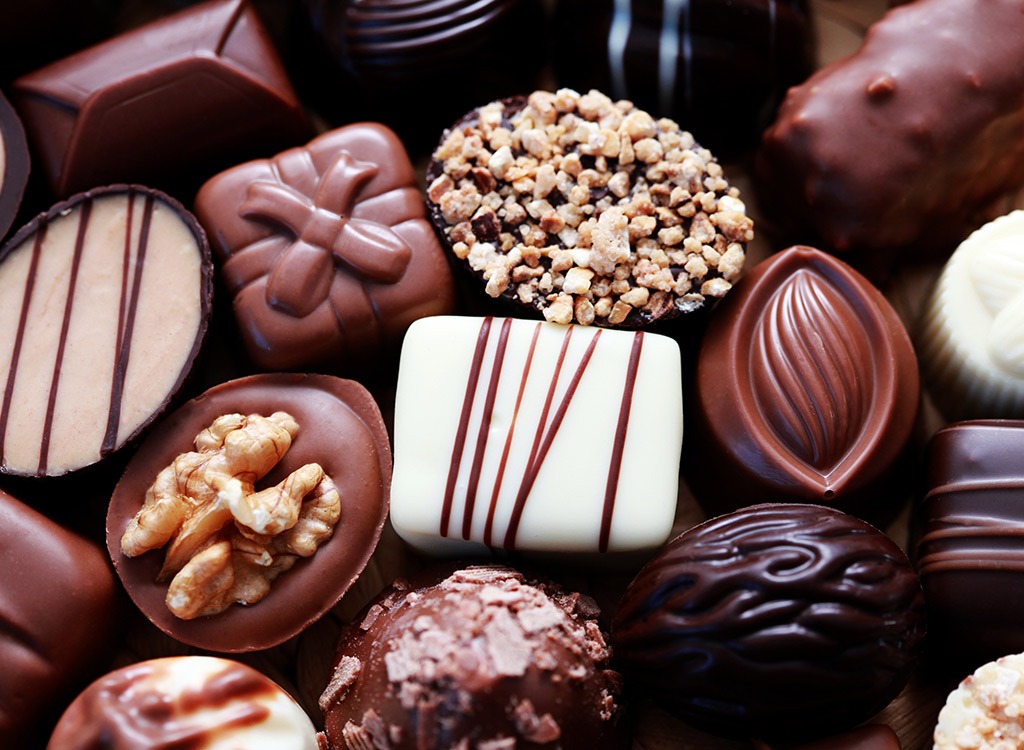
Think of white chocolate like white, refined flour: over processed and devoid of nutrients. White chocolate's only "chocolate" comes from cocoa butter (the rest is milk solids, milk fat, and sweetener), and even that ingredient commonly loses its antioxidant properties during a "deodorizing" step. Without non-fat cocoa solids, white chocolate doesn't have any flavanoids—antioxidant compounds that have been shown to improve glucose metabolism and lower blood pressure—or gut-healthy prebiotics, which help reduce inflammation and fight weight gain. It also lacks the ability to stimulate the euphoria-inducing chemicals that real chocolate does, including serotonin. Grabbing some chocolate? The darker the better. More cacao means more happy chemicals and less sugar.
Cool Whip
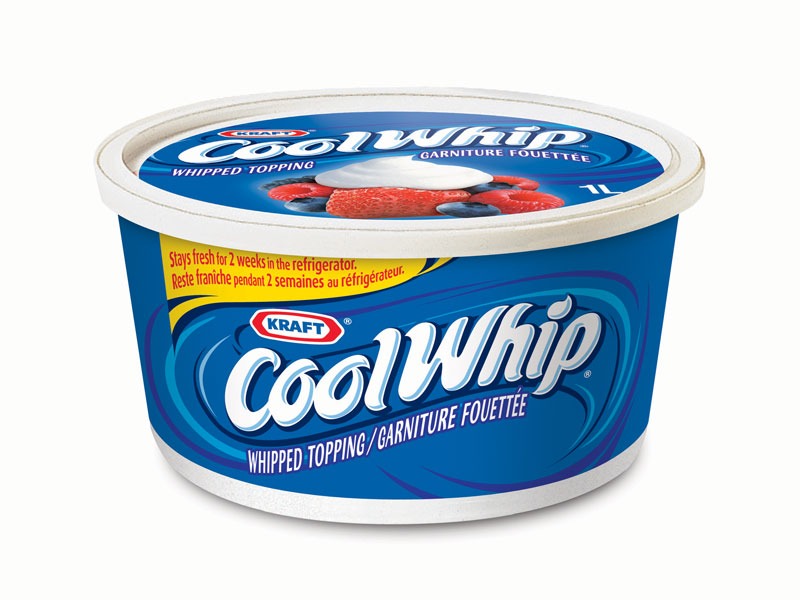
Whip, as in whipped cream, right? Not exactly. Kraft Cool Whip's first ingredient is water, followed by hydrogenated vegetable oil, high fructose corn syrup, corn syrup, and finally, skim milk. Fun fact, the original recipe was "non-dairy"—it didn't even have milk! Kraft only started adding skimmed milk and light cream in 2010. And although Kraft is the most common store-bought brand, you should also be checking the ingredients of any generic "whipped" topping out there. Looking for whipped cream? Buy a little carton of heavy cream, grab a mason jar, and start shaking!
Bac'n Bits
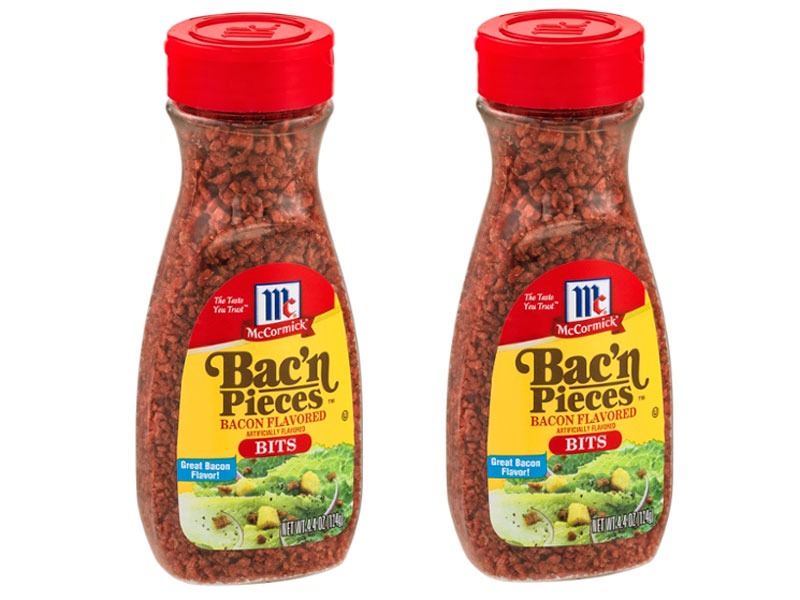
When an apostrophe replaces a letter in a food's name, it's a dead giveaway this product isn't what it wants you to think it is. Oh, and the label's "bacon flavored." Textured soy flour and oil provide the "bit," carcinogen-contaminated Red 40 and caramel coloring provide the visual cue this stuff sure looks like bacon, and the combination of yeast extract, disodium inosinate, and disodium guanylate—otherwise known as MSG—provides the meaty, umami flavor. These so-called "flavor enhancers" have been implicated in increasing appetites along with stimulating your body to pump out insulin, the fat-storage hormone. If you fried up a slice of bacon and crumbled it, you might be eating double the calories, but you'd save yourself 180 mg of sodium.
Dean's Guacamole Flavored Dip
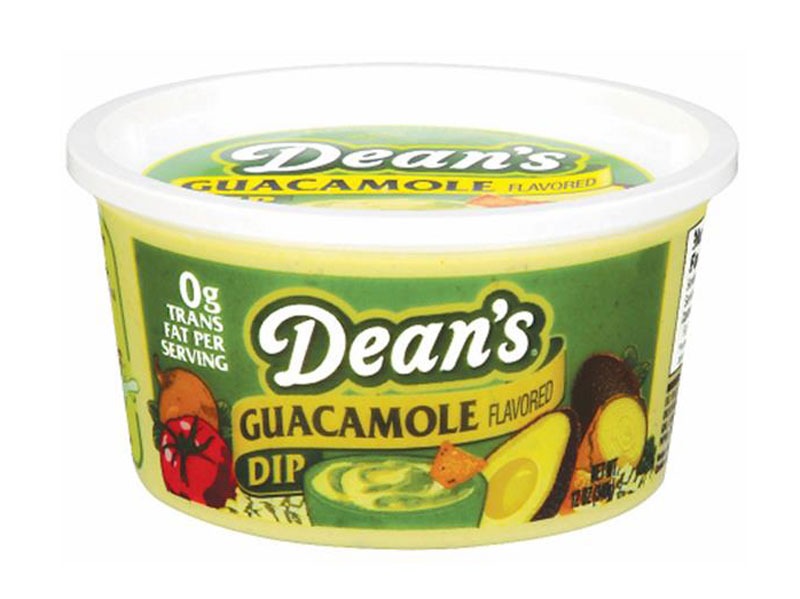
Just because the label says "guacamole" and the stuff inside looks green does not mean this product is bursting with the same fat-blasting properties as avocado. Keep reading and you'll see one of the most telling words in branding: flavored. This imposter is made mostly of skim milk (!), oil, water, and tomatoes. And less than 2 percent real avocado! With all its liquid, how is this guacamole-style dip dip-able? It's from emulsifying egg yolks, gelatin, a slew of gums and gels, and then thickening it up with isolated soy protein. And that green color you see? It's just blue, red, and yellow food dyes. Besides the fact that real avocados will lend their free-radical-fighting benefits, sticking with the green fruit will also help you avoid this waist-widening concoction.
Sunny D
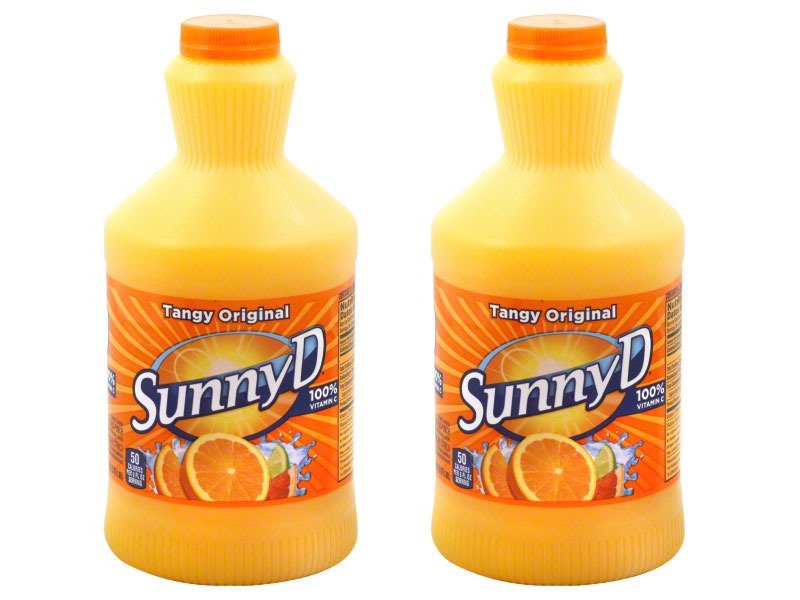
If the sun tastes like corn syrup, modified cornstarch, canola oil, cellulose gum, artificial sweeteners, artificial flavors, artificial colors, and loads of preservatives, Sunny D certainly unleashed it. And while Sunny D Tangy Original promotes that it has 100 percent of your vitamin C for the day, the majority (a whopping 98 percent) of this drink is just water and high fructose corn syrup. That's right. That orange you see on the label is only present in the "2% or Less" section, along with five other fruit concentrates, so that amount of vitamin C is probably only coming from the added ascorbic acid. If you want some orange juice, you're better off going with something that has to be refrigerated, like Evolution Fresh's Cold-Pressed Orange Juice.
Fruit Snacks
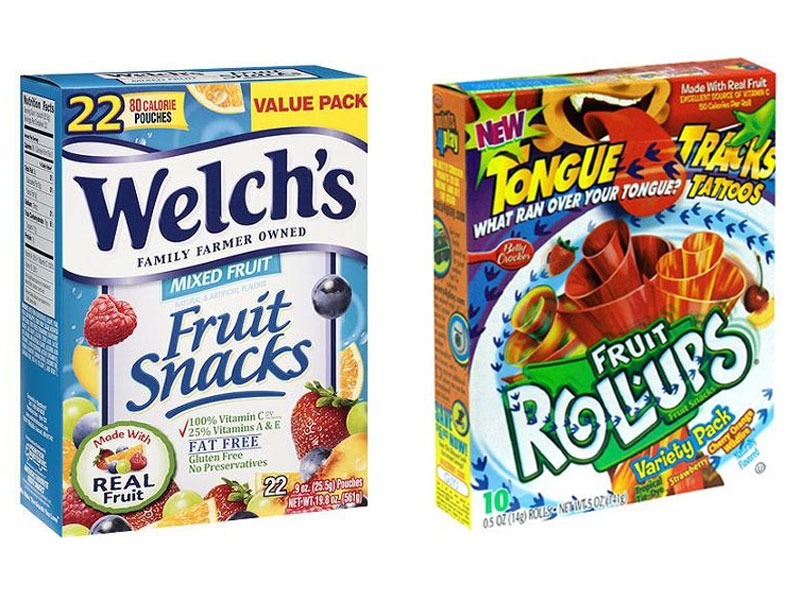
Yes, the first ingredient is usually fruit and vegetable juice blend from concentrate, but following that is sugar, corn syrup, and modified corn starch, along with more sugar, and carnauba wax. Heck, some roll-ups even include partially hydrogenated oils—aka artery-clogging trans fats now banned by the FDA! And don't be fooled into thinking these gummies are as healthy as the real thing just because they have the word "fruit" in them. In fact, fruit juice is one of the worst added sweeteners for your health because it's high in liver-wrecking fructose and low in the slow-digesting fibers that make fruit healthy in the first place. Snack on real fruit to get the fiber and nutrients that come naturally packaged with it.
Processed Cheese
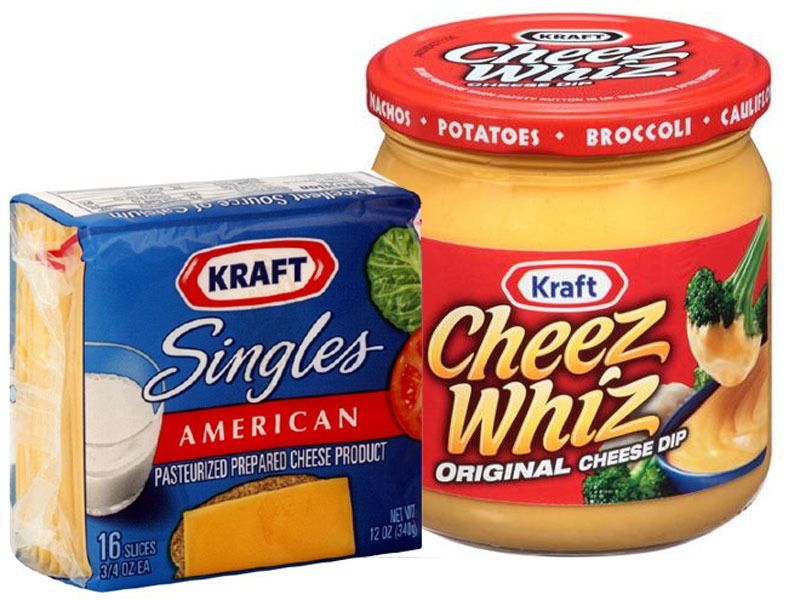
Whiz or whizout? That's the question you'll often be asked in reference to whether you'd like your Philly Cheesesteak doused with a heaping spoonful of Cheez Whiz. Or should they be called a cheezsteak? That's because Cheez Whiz, along with processed cheese products like American Cheese and Velveeta aren't really cheese at all. In fact, federal laws mandate that each of these products be labeled as "processed cheese" or a "cheese product" since their manufacturing process is quite different from natural cheeses: they start with only 51 percent real cheese, add some artificial flavors, colors, fillers, preservatives, emulsifiers, acidifiers, heat it up, and then wrap it up. Reach for a block of 100 percent real cheddar—the U.S. just imported way more than we need, so cheese prices are about to go way down.
Dannon Fruit on the Bottom Cherry
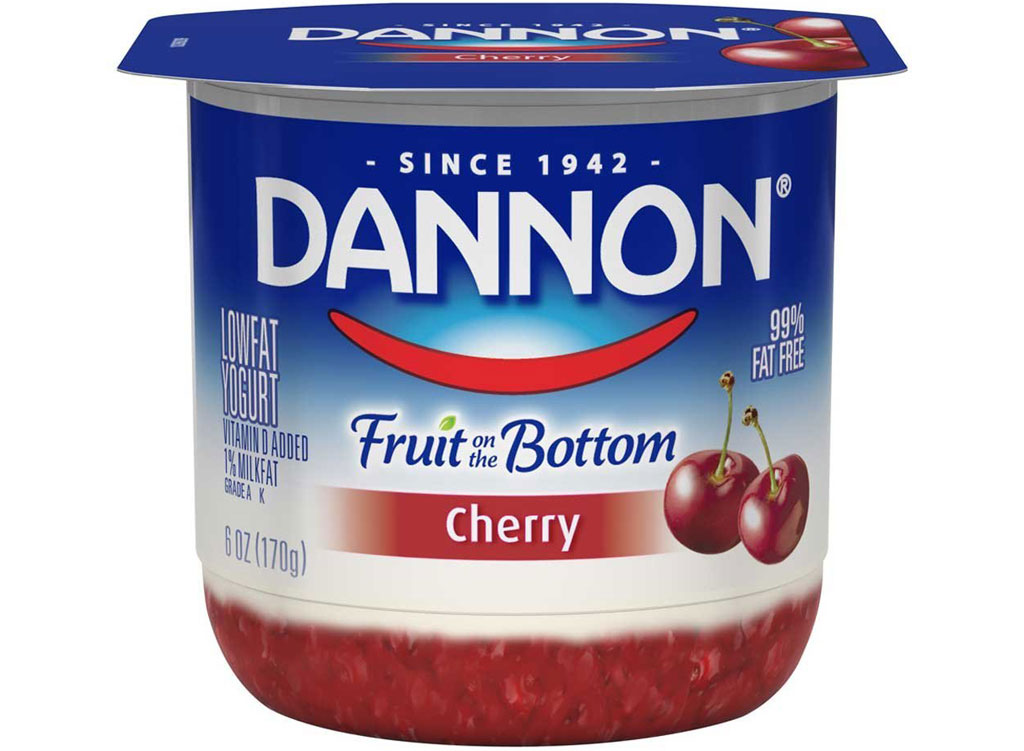
If you're craving pieces of fresh cherries in your fruit on the bottom yogurt, you'll have to look elsewhere than Dannon's version. That's because Dannon's Fruit on the Bottom Cherry is actually made with strawberry pieces and less than 1 percent of "natural flavor, fruit juice, and vegetable juice (for color)." Aside from there being no mention of cherries at all in the ingredients list, this yogurt is one of the worst for your waistline with a shocking 22 grams of sugar per container.
Veggie Chips and Straws
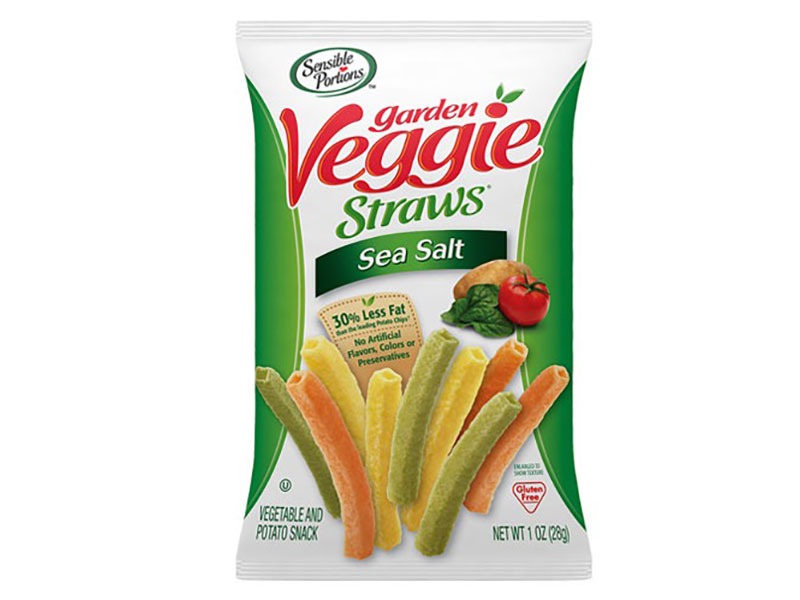
There's a reason Garden Veggie Straws are at the center of a lawsuit; the ingredients are mostly potato flour and potato starch. Same with the Garden Veggie Chips. Although tomato paste and spinach powder are used to make these snacks, powdered and processed vegetables lack the vitamins and nutrients of their fresh counterparts — a far cry from the garden-fresh vegetables pictured on the snack package. Although they contain 30 percent less fat than potato chips, the Garden Veggie Chips and Straws aren't much more than a potato snack.
Coffee Creamers
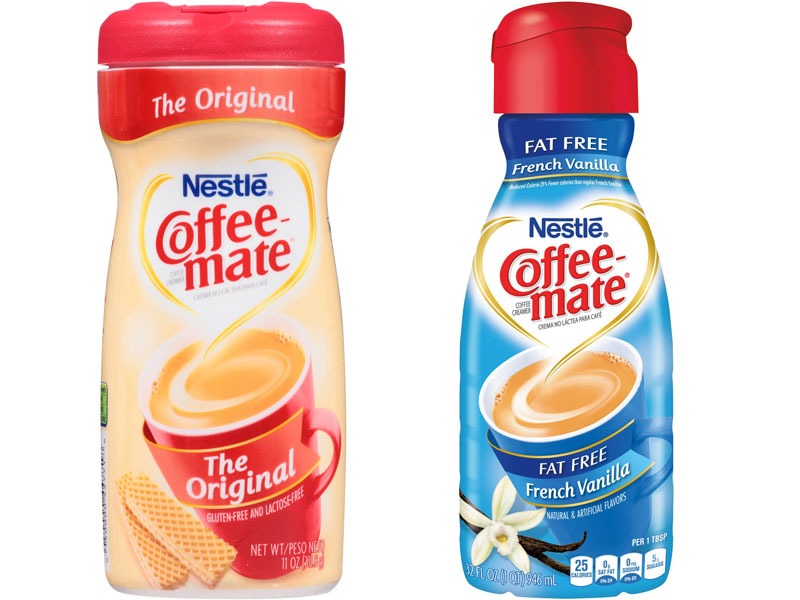
We don't know about you, but when we read the word "creamer," dairy cows come to mind. Unfortunately, that's not what you're getting when you pick up coffee creamers like Coffee-Mate. In fact, the brand even labels it as lactose-free! In true untrustworthy food fashion, this creamer is none other than water, corn syrup solids, and hydrogenated vegetable oil, and artificial flavoring in disguise. In fact, the closest thing this creamer has to milk is a milk derivative: sodium caseinate. If you're looking for something to add to your coffee, add heavy cream. It's one of the Best Full-Fat Foods for Weight Loss.
Oreos
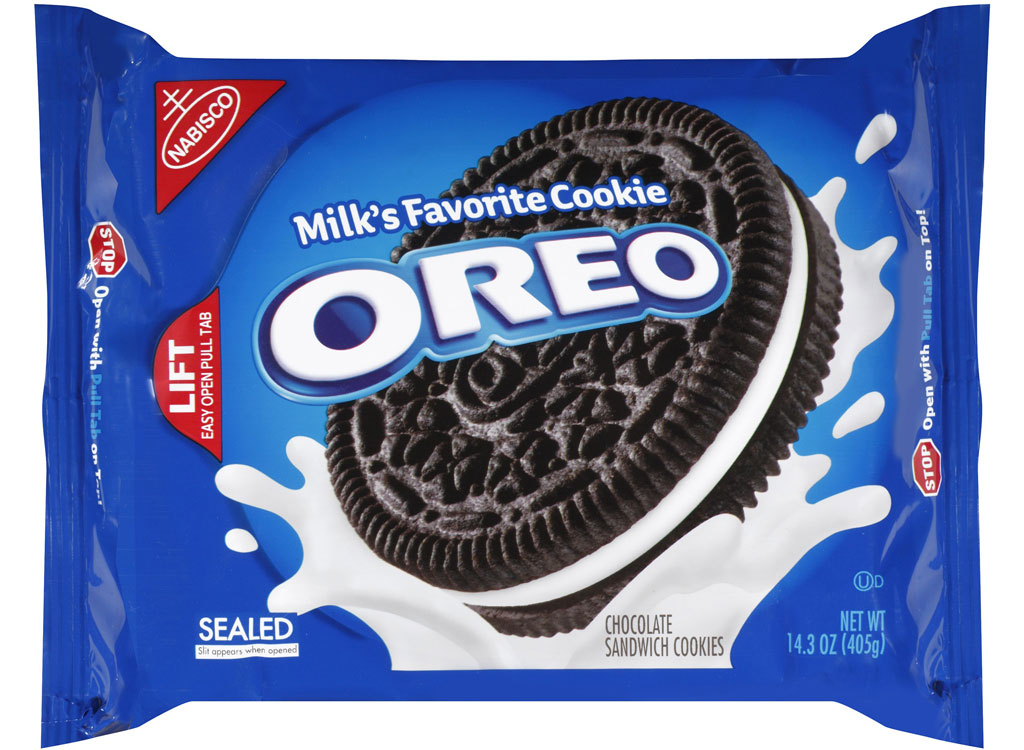
Oreos may bill itself as "Milk's Favorite Cookie," but dunking the famous chocolate cookie sandwich into a glass of milk is the only dairy you'll get. That's because the filling inside an Oreo isn't cream at all, rather it's "creme," a food term that must be used to describe something that's not actually dairy. So what is that white stuff in the center of an Oreo? Sugar, palm and/or canola oil, high fructose corn syrup, soy lecithin, and artificial flavor. Basically, sugar and hydrogenated oils. The cookies themselves are basically vegan (we say "basically" because there could be some cross-contamination with milk during the cookie's production).
Vanilla
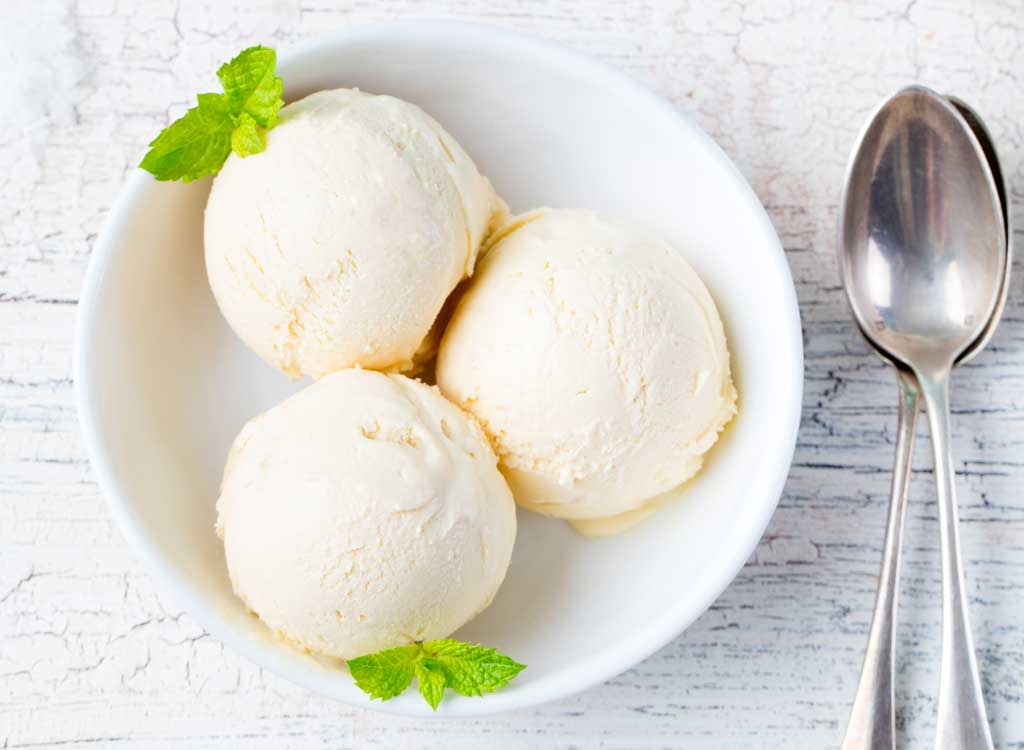
Before buying vanilla extract, make sure it contains, you know, vanilla. Some brands are made with vanillin, a synthetic flavoring agent, and dyed with a caramel color. Actual vanilla content: zero.
Snapple Raspberry Peach
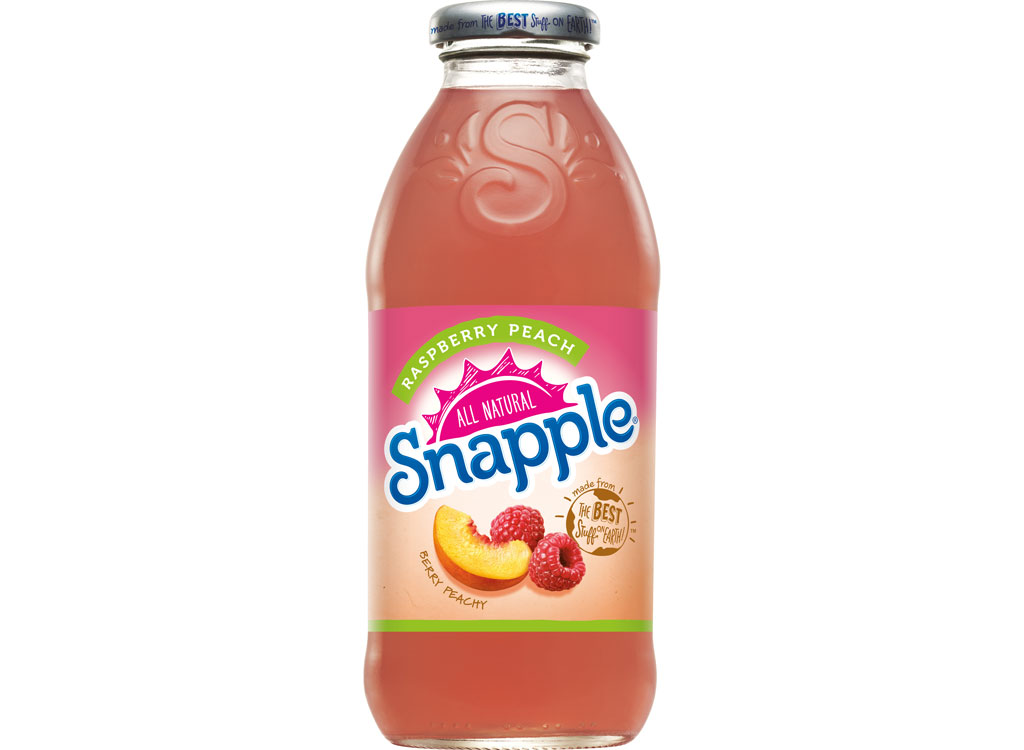
Snapple has an extensive line of fruit juices and teas, but some of the flavors are deceptive. Its raspberry peach drink, for example, doesn't have any raspberry juice in it at all. Instead, the nutrition panel lists the ingredients as: filtered water, sugar, pear juice concentrate, peach puree, citric acid, natural flavors, vegetable juice concentrate (for color), and acacia gum. So unless the raspberry taste is lurking in the "natural flavors," this should actually be called pear peach juice.
Tea
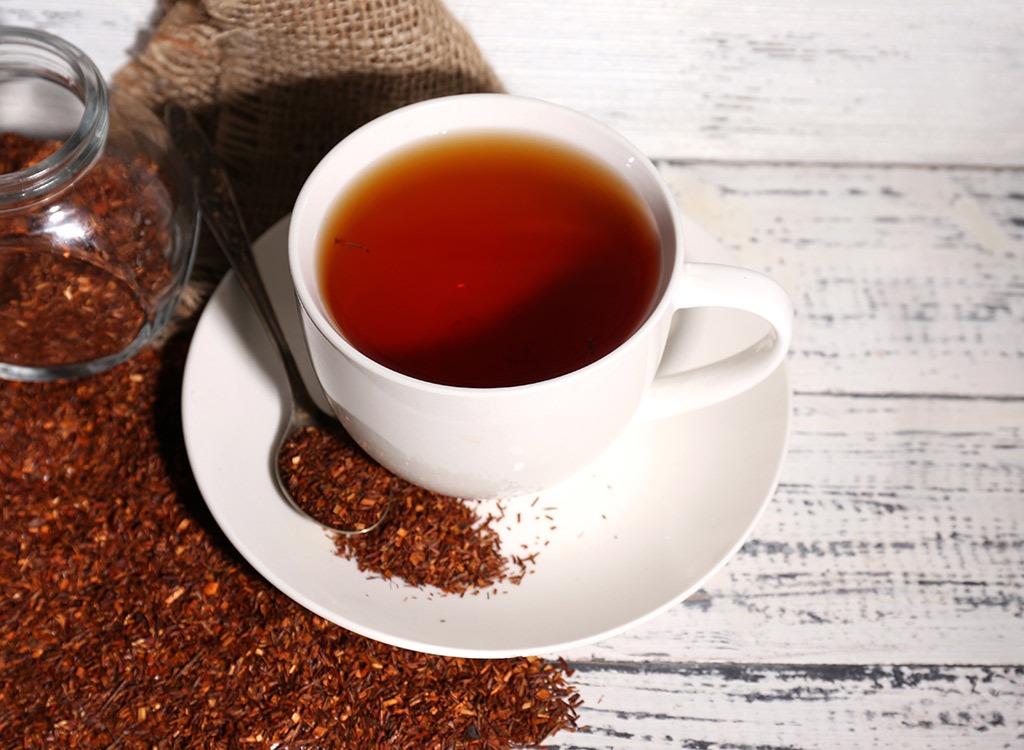
You asked for an iced tea, not an iced tree. Back in 2013, The Guardian reported that tea leaves can be contaminated with sawdust, lawn grass, fern leaves, and even branches. For more shocking surprises, click here to discover 20 Vegetarian Foods That Aren't!
EDITOR'S NOTE: A previous version of this article listed Extra-Virgin Olive Oil as a fake food, writing:
"Larry Olmsted, author Real Food, Fake Food, told Mother Jones. 'Most oils sold in the United States are fake,' he writes, and probably diluted with soybean or even rancid oil."
We would like to issue a clarification to this published statement. It has since come to light that Olmstead's statement that "most oils sold in the United States are fake" is misleading, inaccurate, and hyperbolic. This claim has no evidence cited to support it and distorts the gravity of the amount of olive oil fraud in America.
While independent investigations have found that olive oil fraud—selling cheap olive oil under the name "extra virgin" or blending olive oil with other oils (such as sunflower or canola)—does happen, it does not make up the majority of oils in the grocery store. On the contrary, independent quality control testing by the only group in the states to perform independent testing of any kind, the North American Olive Oil Association (NAOOA), found that only 2 percent of olive oil sold in U.S. retail outlets is adulterated.
